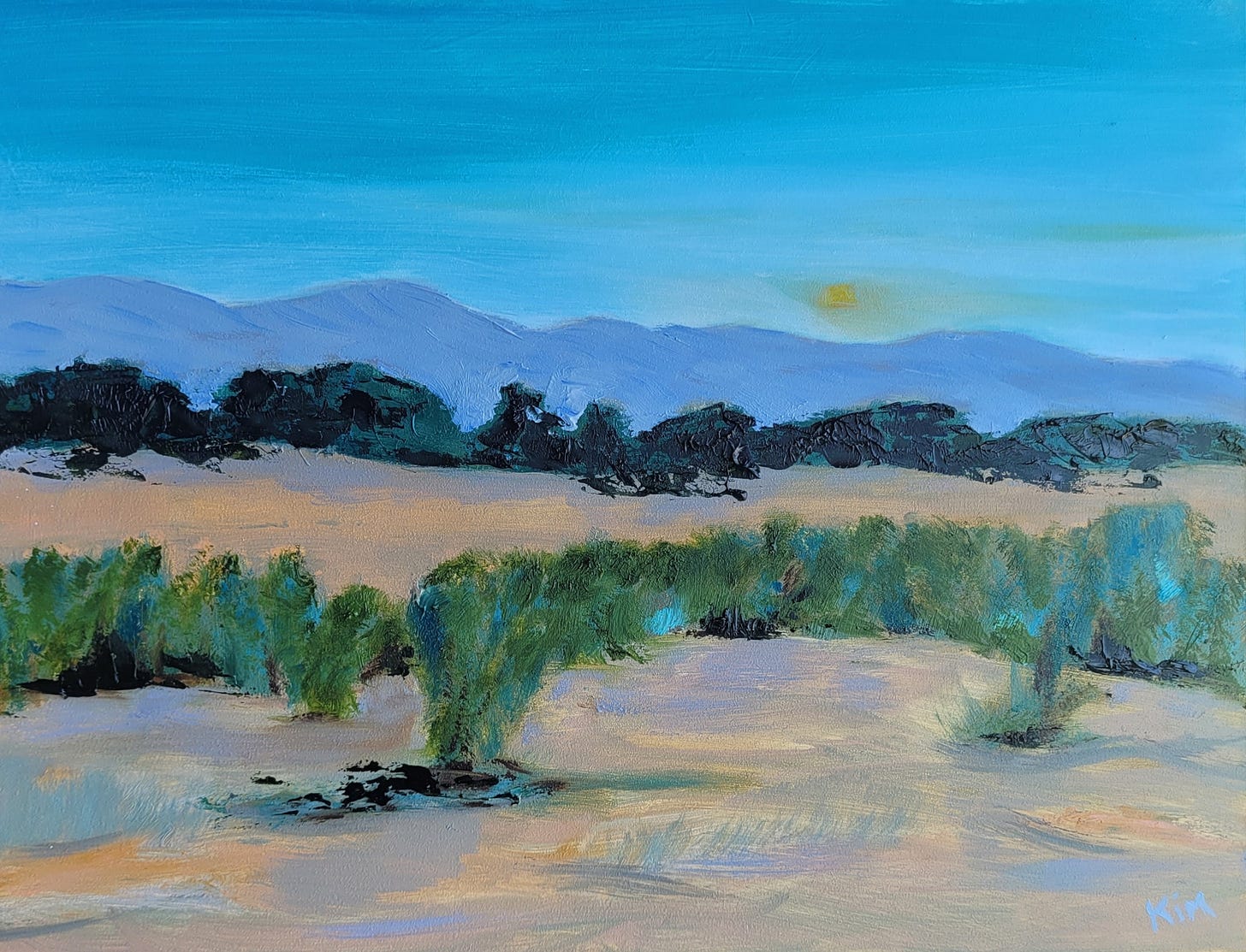A blank canvas can feel daunting. Like a taunt or a tease, or a straight up insult.
This white space invites you to make your mark, state your case, express your emotions or render your interpretation. It forces you reflect on the state of mind you bring to the act of creating.
Some days feel easy, like inspiration bursts out in a rainbow of color. But some days, creative inspiration takes some coaxing.
Here are some warm up practices I use to keep me in creative flow:
Designate a time-frame for the session. I usually keep it short - it’s amazing how much work I can get done, and how satisfying a 30 -60 minute session can yield
Create Routines. Keep a regular time of day as your designated studio time (or writing time, or dancing time). The body remembers a routine and will start preparing itself to perform if it knows to expect a certain activity.
Turn off notifications. I don’t even have internet in my studio. This wasn’t originally by choice, but I think if I had to choose, I’d keep it the way it is. I don’t answer the phone or any messages while I’m in the studio. I usually listen to some up-beat music to keep some energy flowing, or sometimes a softer, instrumental background music can help me turn off the thinking mind
Don’t expect results. So often what starts out as, “I’m just going to add a splash of color to this mountain” ends up being an entirely new or reworked painting.
Set Intentions. I do set goals for work I want to produce. If I have several exhibits coming up (like now!) and I need to produce work for them, then I’ll start by identifying the substrates for each exhibit. If I will need 10 pieces of work for a show, I’ll see what materials I have in the studio that can accommodate 10 pieces in a series. Then I’ll create foundations or under-paintings, so that I have a visual sense of what I will be creating. As I develop each piece, I pay attention to the colors and styles of the series so that they harmonize and play off of each other.

This process is also part of the creative process and so continuously evolving.
The one thing that characterizes the creative process is that it is never a standardized exercise. There are no SOPs (Standard Operating Procedures) and so that makes you, the creative, the manager as well as the worker bee.
You get to choose. But that also means you have the responsibility to choose, so you must choose something.
Whatever it is, recognize your creative choices as steps on your creative path. You always have the right to change how you do things. That is the prerogative of the artist!
And whether you call yourself an artist or not, you are creating your own life.
Try one or more of these practices and see what happens in your creative process. Let me know how it goes in the comments!


